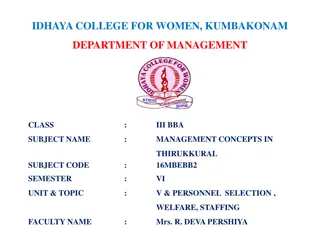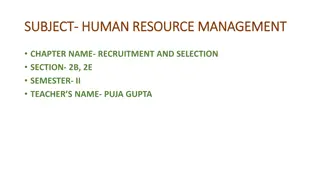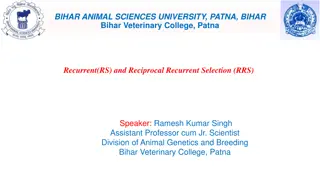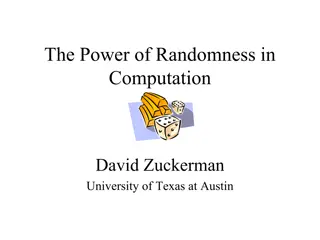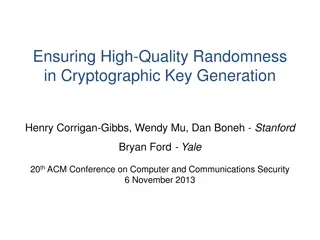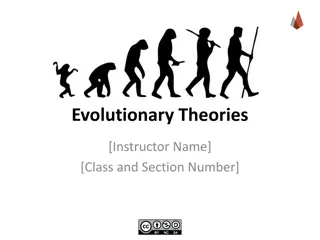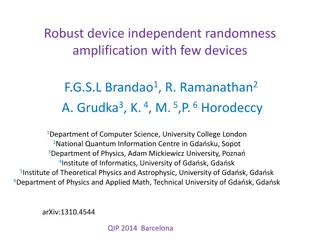Understanding Randomness in Selection Processes
Explore two problems related to modeling randomness - one involving choosing random students to represent a homeroom and the other simulating a cereal company's prize distribution. Learn how random number tables can be used for fair selections and calculate the average number of cereal boxes a customer needs to buy to get all prizes. Dive into the world of probability and simulations in an engaging way.
Download Presentation

Please find below an Image/Link to download the presentation.
The content on the website is provided AS IS for your information and personal use only. It may not be sold, licensed, or shared on other websites without obtaining consent from the author. Download presentation by click this link. If you encounter any issues during the download, it is possible that the publisher has removed the file from their server.
E N D
Presentation Transcript
13-7 Modeling Randomness
Problem 1: Making Random Selections There are 28 students in homeroom. Four students are chosen at random to represent the homeroom on a student committee. How can a random number table be used to fairly choose the students? (Use chart on pg 901)
Problem 2: Making a Simulation A cereal company is having a promotion in which 1 of 6 different prizes is given away with each box. The prizes are equally and randomly distributed in the boxes of cereal. On average, how many boxes of cereal will a customer need to buy in order to get all 6 prizes





